#Musa Keys
Explore tagged Tumblr posts
Text
Unavailable- Davido ft Musa Keys
17 notes
·
View notes
Text

#Afro Nation#Asake#Ch'cco#Dadju#Famous#J Hus#Lisandro Cuxi#Musa Keys#Nicki Minaj#Ninho#Portimão#Tayc#Tman Xpress#Yumbs
1 note
·
View note
Text
Davido - UNAVAILABLE (Official Video) ft. Musa Keys
youtube
Unavailable (ft. Musa Keys) - Davido
0 notes
Video
youtube
Possible — DBN Gogo X Musa Keys X Dinho X Lebza The Villain (Amapiano Now)
#youtube#DBN Gogo#Musa Keys#Dinho#Lebza The Villain#Possible#Amapiano#music#dance#culture#lifestyle#entertainment#sa#rsa#music scene#africa
0 notes
Text
About that Musa fellow…
#kcd2#kingdome come deliverance 2#samuel kcd2#kcd2 samuel#henry of skalitz#dry devil#katherine#this made me laugh#low key love hynek#but also hate him#it’s complicated#my oblivious husband Sam#devils pack#hynek#musa#musa of mali
57 notes
·
View notes
Text
Today is the birthday of the Fairy of Dragon Flame
Bloom❤️🔥🐉✨
🎥 Winx Club (2004).
📹 Winx Club Official (YouTube).
🎶 Girl on Fire, Alicia Keys (EdenEdits Edit Audio).

#ladywatereton#winx#winx club#fairy of dragon flame#bloom winx#winx bloom#alicia keys#girl on fire#winx club 20th anniversary#pop pixie#winx edit#tecna winx#flora winx#musa winx#stella winx#layla winx#aisha winx#fairies#fairy tail#fairy tales#fairycore#fantasy#2000s#vintage#fairy aesthetic#aesthetic edits#light academia#domino#winx alfea#magix
10 notes
·
View notes
Text

My vintage Winx Club rings. They were sold with trading cards back in the days (so sad they don"t fit me anymore -or only on my pinkies ^^')
(Personnal pic. Please reblog if you liked, do not use or repost. Thanks! NSFW AND KINK ACCOUNTS DO NOT INTERACT !!!)
#winx club#cartoon#toys#photography#fairy#toy#toycore#vintage#life#fairy kei#jewelry#art#my art#artist on tumblr#bloom#flora#stella#musa#layla#techna
6 notes
·
View notes
Text
okay now im kinda hopeful that the music theyre using for the tranformation sequence isnt final cos theres no way musa's dancing off-beat like that
#...right? RIGHT??? 🥹#can you tell i just watched musa's transformation for the reboot#THEYRE ALL GOING SO FAST IM GONNA CRY (/NEG)#The wings are cute tho. the little music notes and piano keys are creative#Mhizzy's Words
0 notes
Text
I grew up with Totally Spies and Winx, so whenever I found things in my house that resembled magical or spy objects in the slightest I would keep them. Had a bit of a hoarding habit. I lost most of those objects lol
#totally spies#I was low key gay for Clover. Specifically for that one episode where she kinda became a cat (yeah I was like 7-8)#winx club#And if you hadn't noticed I love music very much so obviously my favorite has always been and will be Musa
1 note
·
View note
Text

#Afro Nation 2024#Justin99 & Pcee#Kamo Mphela#Major League DJz#MFR Souls#Musa Keys#Portugal#SA Music Stars#Tyla#Tyler ICU#Uncle Waffles#Virgo Deep
0 notes
Quote
The Democrats will not save colleges and universities. They have been key partners and pioneers for all of the actions currently being undertaken by the Trump administration in this domain.
Musa al-Gharbi
152 notes
·
View notes
Text

Neglect of Black History and Heritage in Education: A Garveyite Perspective
Introduction: The Erasure of Black Knowledge as a Tool of Oppression
One of the greatest weapons of colonialism and white supremacy has been the deliberate suppression of Black history and heritage in education. Across the world, Black children are taught European history, ideologies, and values while their own ancestral legacies are ignored, distorted, or erased.
From a Garveyite perspective, the neglect of Black history is not just an educational failure—it is a deliberate strategy of mental colonization, designed to:
Prevent Black people from recognizing their historical greatness.
Ensure that Black youth identify with European values rather than their own heritage.
Weaken Pan-African unity by keeping Black people disconnected from their collective past.
If Black people do not reclaim and institutionalize their own history in education, they will continue to be mentally enslaved, unable to define their own future. Without historical consciousness, true liberation is impossible.
1. The Historical Suppression of Black History in Education
A. The Colonial Education System and the Erasure of African Knowledge
European colonizers designed school systems that prioritized European history, philosophy, and culture, while:
Dismissing African civilizations as primitive.
Demonizing African spiritual and governance systems.
Promoting the idea that Africa only gained significance after European contact.
Example: African students under British and French colonial rule were taught more about Shakespeare and Napoleon than about Mansa Musa or Queen Nzinga.
Key Takeaway: Education was one of the first tools of colonial control—ensuring that future generations would see themselves as inferior.
B. The Role of Slavery and Western Academia in Distorting Black History
After the Transatlantic Slave Trade, Black people were systematically:
Kept from learning to read and write.
Taught false narratives about their own past.
Given an education that centered white supremacy, rather than Black empowerment.
Example: American schools taught that enslaved Africans were "uncivilized" and benefited from slavery, reinforcing racist ideologies.
Key Takeaway: An oppressed people who do not know their history will always depend on their oppressors for knowledge.
C. The Ongoing Western Control of Black Historical Narratives
Even today, Black history is filtered through a Eurocentric lens, leading to:
The minimization of Black empires and civilizations in textbooks.
The portrayal of African history as a story of defeat and victimhood, rather than innovation and greatness.
The false belief that Black history begins with slavery.
Example: In many Western schools, Black history is only discussed in the context of slavery and civil rights, ignoring thousands of years of African achievements.
Key Takeaway: If Black people do not control the teaching of their own history, they will always be taught narratives that serve foreign interests.
2. The Consequences of Neglecting Black History in Education
A. Identity Crisis Among Black Youth
Because Black history is neglected, many Black youth:
Struggle with self-worth and racial pride.
See European and Arab cultures as superior.
Lack knowledge of Black heroes, inventors, and historical leaders.
Example: Many Black students grow up knowing more about European monarchs than African kings and queens, leading to psychological inferiority complexes.
Key Takeaway: Without historical identity, Black youth become mentally dependent on foreign cultures.
B. Lack of Black Political and Economic Empowerment
When a people do not know their history, they:
Do not understand how economic exploitation works.
Fail to see patterns of oppression and how to fight them.
Are unable to build independent institutions because they lack knowledge of past Black self-sufficiency.
Example: Many Black communities struggle economically because they have not been taught about historical Black Wall Streets, self-sufficient African empires, or Pan-African economic models.
Key Takeaway: Historical awareness is key to Black economic and political empowerment.
C. Division Among Black People Due to Historical Ignorance
Because many Black people have been mis-educated about their history, they:
Fail to see the connections between Africa, the Caribbean, and Black America.
Adopt European-created tribal and national divisions instead of embracing Pan-African unity.
Dismiss their own historical figures while celebrating European ones.
Example: Many Africans see themselves as separate from Black Americans and Caribbeans, failing to recognize their shared history of struggle and resistance.
Key Takeaway: A people divided by historical ignorance will always be weak.
3. The Garveyite Solution: Reclaiming Black History in Education
A. Establishing Black-Centered Curricula in Schools
Black communities must:
Develop their own history textbooks that highlight Black achievements.
Create schools that teach Black history from an African-centered perspective.
Ensure that Black children are taught about their heritage from an early age.
Example: Independent Pan-African schools, like those inspired by Marcus Garvey’s UNIA educational initiatives, must be expanded globally.
Key Takeaway: Education controlled by Black people is essential for true liberation.
B. Teaching Black History as a Story of Triumph, Not Just Oppression
Black history must include:
The greatness of African empires (Kush, Mali, Ghana, Songhai, Kongo, Great Zimbabwe, etc.).
The contributions of Black inventors, scientists, and revolutionaries.
The impact of Pan-African movements and Black economic independence.
Example: Instead of focusing only on the struggles of slavery, Black students must be taught about the Haitian Revolution, the Ethiopian resistance against Italy, and Black economic success stories.
Key Takeaway: Black history must inspire action and empowerment, not just teach victimhood.
C. Using Media and Technology to Promote Black Historical Awareness
Black filmmakers, writers, and educators must:
Create documentaries, films, and TV shows that highlight Black history accurately.
Develop online platforms and social media campaigns that educate on Black heritage.
Push for Black-controlled publishing houses to distribute Pan-African educational materials.
Example: Instead of relying on Hollywood to tell Black stories, Black creatives must fund and produce their own historical films, like those about Marcus Garvey, Malcolm X, and Kwame Nkrumah.
Key Takeaway: Controlling media and education is key to shaping the future of Black consciousness.
Conclusion: Will Black People Reclaim Their History or Continue Living in Ignorance?
Marcus Garvey said:
“A people without the knowledge of their past history, origin, and culture is like a tree without roots.”
Will Black people continue to learn their history from the same system that enslaved them?
Will we allow our children to grow up without knowledge of their ancestors, or will we take responsibility for their education?
Will we prioritize Black historical institutions, or continue relying on Eurocentric education systems?
The Choice is Ours. The Time is Now.
#black history#black people#blacktumblr#black tumblr#black#pan africanism#black conscious#africa#black power#black empowering#blog#LiberateTheMind#BlackHistoryMatters#ReclaimOurHeritage#PanAfricanEducation#Garveyism#marcus garvey#garveyite
73 notes
·
View notes
Text



This post translates directly to @musas-sideblog's about how Touchstarved ties with Victorian horror and implicit/metaphorical sex, and I couldn’t stop thinking about it, so here is a lengthy theory. Enjoy :)
Note 1: Victorian era authors used an unholy amount of ways to imply sexual feelings/acts etc, so I here I will include only the ones that are of interest. Note 2: I've highlighted the "most important" parts. Note 3: I'm not an expert at this, so please bear with me and feel free to correct me. Note 4: Do I need to add a TW? I think it's obvious-

Overview: What is Victorian Horror?
Victorian horror refers to the genre of horror literature, art, and culture that flourished during the Victorian era, roughly from the mid-19th century to the early 20th century, coinciding with Queen Victoria's reign from 1837 to 1901. This period was marked by a fascination with the macabre, the supernatural, and the dark aspects of human nature, reflecting the anxieties and societal changes of the time.
Key Themes and Characteristics
Supernatural Elements:
Ghosts and Spirits: Tales of haunted houses and spectral apparitions were central to Victorian horror. Charles Dickens's "A Christmas Carol" (1843) and Henry James's "The Turn of the Screw" (1898) are notable examples.
Monsters and the Gothic: The era's literature is filled with monstrous creations and gothic settings, such as in Mary Shelley's "Frankenstein" (1818), Bram Stoker's "Dracula" (1897), and Robert Louis Stevenson's "Strange Case of Dr Jekyll and Mr Hyde" (1886).
Science and the Unknown:
The Victorian period was a time of great scientific advancement, but also of fear about the implications of these discoveries. This is evident in works that explore the dangers of unchecked scientific experimentation, like "Frankenstein" and H.G. Wells's "The Island of Doctor Moreau" (1896).
Exploration of the Human Psyche:
Victorian horror often delved into the darker aspects of the human mind, including themes of duality, madness, and the hidden, sinister side of human nature. This is seen in "Dr Jekyll and Mr Hyde" and Edgar Allan Poe’s works, such as "The Tell-Tale Heart" (1843).
Social and Moral Anxieties:
The literature frequently reflected Victorian society's fears and anxieties, including issues related to sexuality, class, and the role of women. Gothic novels often contained subtexts about societal norms and the consequences of transgressing them.
Urban Fear and Isolation:
The rapid urbanisation of the Victorian era contributed to themes of isolation, alienation, and fear of the crowded yet lonely cityscape. This is evident in the settings of many horror stories, such as Arthur Machen's "The Great God Pan" (1894).
Sexual Content: Victorian literature is renowned for its strict moral codes and conservative views on sexuality. Explicit depictions of sexual activity were considered taboo and were subject to censorship. Consequently, authors developed subtle and nuanced methods to imply sexual scenes or themes.
Literary Techniques for Implying Sexual Scenes
✧ Symbolism and Imagery:
Sexuality was often conveyed through symbolic imagery. Objects, actions, or natural phenomena could serve as metaphors for sexual activity or desire. For example, in "Dracula" by Bram Stoker, blood and biting symbolise sexual penetration and the exchange of bodily fluids, infusing the act with a sense of forbidden desire and eroticism.
Clothing and Undress:
Gloves: In Victorian culture, gloves were highly symbolic. The act of a woman removing her gloves in the presence of a man, or a man assisting her in this act, could signify a moment of intimacy or vulnerability. Similarly, a man giving a woman his gloves could be a sign of affection or a deeper connection.
Hats and Bonnets:
Corsets
Objects and Personal Items:
Locks of Hair
Jewellery
Books and Letters
Touch and Physical Contact:
Kissing Hands
Hand-Holding
Food and Drink:
Wine: Sharing wine or a meal in an intimate setting often suggested a prelude to deeper connection. Descriptions of characters drinking wine together in private could imply a romantic or sexual undertone.
Fruit: Certain fruits, like apples, grapes, or peaches, were laden with sexual symbolism. Eating or sharing fruit could represent temptation or indulgence. For instance, in Christina Rossetti’s poem "Goblin Market", the act of eating the goblin fruit is rich with sexual symbolism.
Flora and Fauna
Flowers and Gardens:
Roses: Roses were often used to symbolise love and passion. A red rose might suggest romantic or sexual attraction, while a wilted rose could imply lost innocence or sexual ruin.
Lilies: Lilies, especially white ones, represented purity but could also suggest a contrasting theme when associated with a fallen or tarnished character.
Garden Settings: Scenes set in secluded gardens or amongst lush, overgrown vegetation often hinted at secret or forbidden encounters. Descriptions of characters wandering through or tending to gardens could imply sexual exploration or awakening.
Flowers Blooming or Opening: The blooming of flowers often represented sexual awakening or the act of losing one's virginity.
Nature Imagery:
Rivers and Water: Flowing water and rivers often symbolised sexual desire and the act of lovemaking. For instance, in "Tess of the d'Urbervilles" by Thomas Hardy, Tess's encounter with Alec d'Urberville is often described with metaphors of nature and fluidity.
Storms and Weather: Storms, with their intense energy and sudden outbursts, were frequently used to symbolise sexual passion or climactic moments.
Birds and Beasts:
Animals, especially those that are wild or predatory, often symbolised primal sexual instincts and desires. The taming or interaction with these animals could imply a character’s grappling with their own sexuality.
Fire and Heat
✧ Phrases and Sayings
Euphemistic Language
Descriptive Phrasing
Dialogue and Confessions
Private Spaces:
Secluded or Dimly Lit Rooms: Scenes set in private, darkened rooms often suggested clandestine sexual encounters. The privacy of the setting allows authors to imply what could not be explicitly stated. In Wilkie Collins’s "The Woman in White", many key interactions happen in secluded spaces, hinting at secrets and hidden desires.
Dreams and Fantasies:
Dream Sequences:
Dreams and fantasies were used to explore a character’s subconscious desires and fears, often revealing their suppressed sexual longings. These sequences provided a socially acceptable way to delve into erotic themes.
Hallucinations and Madness:
Moments of madness or hallucination could serve as a metaphor for overwhelming passion or uncontrollable sexual desire. These states allowed characters to express forbidden feelings in a way that was metaphorically safe.
Physical Interactions and Horror
Touch and Proximity as Menace:
Unwanted or Forced Touch: In horror, touch that is typically a sign of affection or intimacy becomes a source of fear.
Physical Closeness in Horror Settings: Close proximity in dark, secluded places amplifies the sense of claustrophobia and vulnerability, turning what could be an intimate setting into one fraught with terror.
Undress and Exposure in Horror:
Loosening Corsets and Vulnerability: The act of undressing or loosening clothing, which can be a prelude to intimacy, in horror often leaves characters vulnerable to attack or exposure of their deepest fears.
Food and Consumption in Horror
Cannibalism and Vampirism:
Blood as Sexual and Vital Fluid: The act of consuming blood, as in vampirism, blends the themes of sustenance and sexual exchange. The vampire's bite becomes a metaphor for both sexual penetration and the transfer of life force.
Example: "Dracula" is a prime example where blood consumption is deeply eroticized, with Dracula’s victims often portrayed in a state of ecstatic submission as he drains their blood.
Food as a Lure: Food and feasting, typically symbols of pleasure and indulgence, in horror contexts can be used to lure victims into dangerous situations.
Example: In "Goblin Market" by Christina Rossetti, the goblins’ fruit is both irresistibly tempting and dangerous, representing a forbidden and potentially fatal indulgence.
Plot and Character Dynamics in Horror
Power and Domination:
Common Dynamics with a Dark Twist
Predators and Victims: Characters who prey on others are often literal monsters in horror, representing the loss of control or innocence.
Secrecy and Concealment:
Hidden Desires and Monstrous Revelations: Characters who conceal their true identities or desires often find these hidden aspects manifesting as monstrous or terrifying in horror narratives, suggesting that repression can lead to dire consequences.
Clandestine Meetings and Forbidden Encounters: Secret meetings and forbidden relationships, often tinged with sexual implications, add an element of danger and fear, suggesting that transgressing social norms leads to horror.
Common Themes in Victorian Horror
Duality and the Doppelgänger:
Theme: The concept of duality, where a character has a hidden, darker side, or encounters a double (doppelgänger), often symbolises the internal conflict between good and evil within individuals.
Connection: This theme reflects Victorian anxieties about identity, morality, and the consequences of repressing one’s darker impulses.
Gothic and Supernatural Elements:
Theme: Victorian horror is rich with Gothic elements such as haunted houses, dark landscapes, and supernatural beings. These elements create a sense of dread and evoke the mysteries of the unknown.
Connection: The Gothic setting often serves as a backdrop for exploring human fears, isolation, and the impact of the supernatural on everyday life.
Decay and Degeneration:
Theme: The fear of decay and degeneration, both physical and moral, is a recurring motif. This theme often examines the decline of individuals, families, or societies and the consequences of corruption and vice.
Connection: This theme mirrors Victorian concerns about the erosion of social and moral values amidst rapid industrial and social changes.
Madness and Psychological Horror:
Theme: The exploration of madness and psychological horror delves into the fragility of the human mind and the terror of losing one's sanity. This often includes hallucinations, obsessions, and the thin line between reality and delusion.
Connection: This theme resonates with Victorian fears of mental illness, the limitations of medical knowledge, and the impact of societal pressures on mental health.
Forbidden Knowledge and the Faustian Bargain:
Theme: The pursuit of forbidden knowledge and the resulting consequences is a central theme. Characters who seek power, immortality, or forbidden truths often pay a heavy price, reminiscent of the Faustian bargain.
Connection: This theme highlights Victorian anxieties about scientific progress, moral boundaries, and the potential hubris of human ambition.
The Uncanny and the Unknown:
Theme: The uncanny involves the strange and unfamiliar becoming eerily familiar, often unsettling the reader and characters. It blurs the lines between reality and the supernatural, invoking fear and discomfort.
Connection: This theme taps into Victorian fears of the unknown, the foreign, and the otherworldly, reflecting broader anxieties about social and cultural boundaries.
Death and the Afterlife:
Theme: Victorian horror frequently grapples with themes of death and the afterlife, exploring the fear of mortality, the possibility of an afterlife, and encounters with the dead or undead.
Connection: These themes reflect Victorian preoccupations with death, the spiritual realm, and the possibility of life beyond death, often intensified by the era's high mortality rates and interest in spiritualism.
Isolation and Alienation:
Theme: Isolation and alienation are prevalent themes, often highlighting characters who are physically or emotionally detached from society, leading to their vulnerability and descent into despair or madness.
Connection: This theme resonates with the Victorian experience of industrialization and urbanization, which often led to feelings of disconnection and loneliness.
Class and Social Anxiety:
Theme: Victorian horror often explores themes of class and social anxiety, including the fear of losing social status, the consequences of poverty, and the tension between different social classes.
Connection: This theme reflects the rigid class structures of Victorian society and the fears and tensions that arose from social mobility and economic disparity.
Moral Corruption and Hypocrisy:
Theme: Victorian horror frequently critiques the era’s moral standards and exposes the hypocrisy of societal norms. Characters who appear virtuous often harbor dark secrets or engage in morally dubious activities.
Connection: This theme mirrors the Victorian concern with appearances and the underlying tension between public propriety and private desires.
The Five Pillars of Victorian Horror & The Five Love Interests
The Supernatural and the Gothic (Ais)
Essence: Victorian horror often revolves around the supernatural, blending Gothic elements to evoke a sense of dread and otherworldly terror. This includes ghosts, vampires, haunted houses, and curses, which create an atmosphere where the boundaries between the natural and the supernatural blur.
Impact: The use of Gothic settings and supernatural phenomena provides a backdrop for exploring deeper themes of fear, mortality, and the unknown.
Psychological Depth and Madness (Vere)
Essence: Victorian horror delves into the complexities of the human mind, exploring themes of madness, obsession, and the psychological effects of fear and trauma. Characters often grapple with their sanity, facing inner demons as terrifying as any external threat.
Impact: This focus on psychological horror allows for a deeper exploration of character motivations and the impact of societal pressures.
Moral Corruption and the Double Life (Leander)
Essence: Themes of moral corruption and the duality of human nature are central to Victorian horror. Characters often lead double lives, presenting a veneer of respectability while concealing dark, sinful secrets. This tension between outward appearances and hidden truths reflects the era’s social hypocrisy and fear of scandal.
Impact: These themes critique Victorian society’s emphasis on propriety and the dangerous consequences of repressing one’s true nature. The idea of a double life or hidden self adds to the horror by suggesting that evil can reside within anyone, masked by a facade of normalcy.
Decay, Degeneration, and Disease (Kuras)
Essence: The themes of physical and moral decay, societal degeneration, and disease permeate Victorian horror. These motifs symbolise the fragility of human life and the inevitability of decline, reflecting the anxieties of a society grappling with rapid change and uncertain futures.
Impact: By focusing on decay and degeneration, Victorian horror underscores the transient nature of life and the ever-present threat of corruption and decline, whether through ageing, moral compromise, or societal breakdown.
Isolation and Alienation (Mhin)
Essence: Isolation and alienation are pervasive themes in Victorian horror, often depicted through characters who are physically or emotionally cut off from society. This separation heightens their vulnerability to external threats and internal fears.
Impact: Isolation serves to intensify the psychological tension and sense of dread, as characters confront their fears alone. It also reflects the era’s social and existential anxieties, including the fear of being disconnected or outcast from society.

Generally, I believe each LI connects with a pillair (as seen above). Perhaps by looking at the archetypes we could deduce propable endings and route elements.
Forgive me, for the following part is MESSY;
Ais
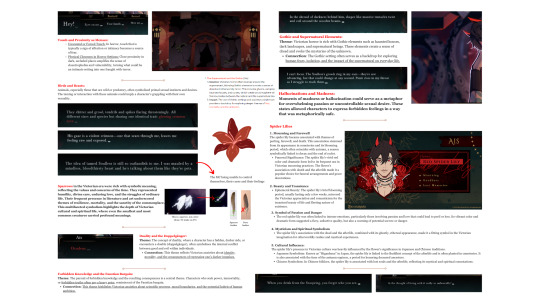
Vere
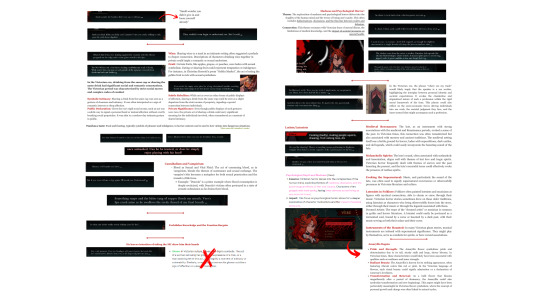
Leander
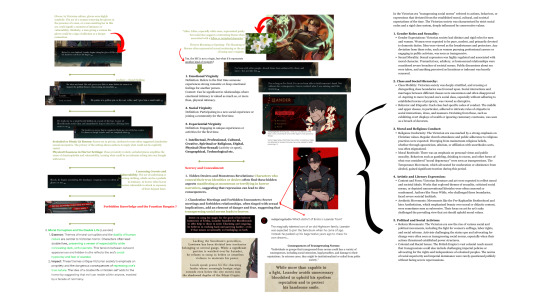
Kuras
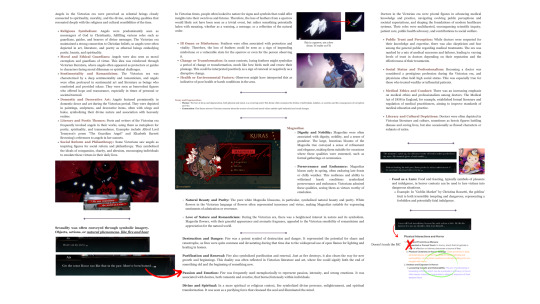
Mhin
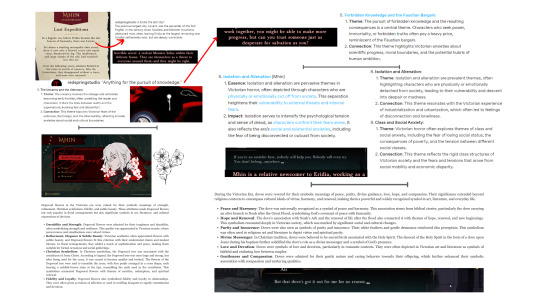

#THIS TOOK ME AGES#but it was worth it#vereletters#touchstarved theory#touchstarved theories#touchstarved ais theory#touchstarved vere theory#touchstarved kuras theory#touchstarved leander theory#touchstarved mhin theory#red spring studios#touchstarved#ts#touchstarved headcanons#touchstarved game#touchstarved oneshot#ais#ais headcanons#ais ts#ts ais#ais touchstarved#touchstarved ais#ais oneshot#vere#vere headcanons#vere ts#ts vere#vere touchstarved#touchstarved vere#vere oneshot
213 notes
·
View notes
Text

I tasted hope…
I tasted trust in Allah’s decree and i’ve never been more accepting of myself and everything that happens in my environment.
Alhamdulillah.
Being what they call ‘delusional’ is indeed the key to a happy life.
Be delusional about Allah’s decree, He split the sea for Musa, saved Yusuf from the belly of a whale, and split the moon for Muhammad. He created you! Isn’t that enough of a miracle?
Allah created you and He is the disposer of every single one of your affairs.
We will all die, wether we suffer or not, wether we sacrifice or not, wether we give up on our desires or not, wether we exhaust our weak bodies and minds or not, wether we spend this life wailing or laughing. It all ends in death. And one step in Jannah makes you forget years of pain, meanwhile one step in Jahannam makes you forget all the pleasures of this world.
So be akhira-minded. Hopeful in Allah’s decree.
Know that this dunyah is but an hour compared to the akhirah, it really is not worth despairing for.
Sit in loneliness with your lord often, think about your decisions, regret your past sins, trust that Allah is forgiving but not forgetful. Seek His forgiveness.
Before taking any steps, dispose all the burden of your worries on Him, make dua, cry between His hands, spend the night He has blessed you with in worship. Cry.
Really, cry. Let out all the pains you stored during the day.
Smile upon hardship. Say as they say: ‘Allah is my Lord and disposed of Affairs’, say it with your heart. And mean it.
Stand up now. Compete with your nafs and shaytan, be competitive and do not let them win over you. For the reward is worth the struggle and more.
Let the future for its creator, regret the past but don’t let your regret cause you to hate yourself or destroy your present, rather, let it be a lesson for you. Live your present.
And this is my heartfelt advice to you.
A dear friend of mine, who got out of the loop of depression and despair before us, sent me once a beautiful text she had written about hope In Allah. I told her jokingly: ‘it’s funny how this is coming from the most suicidal person I know’ she said: ‘Allah granted me tawfiq in becoming human again’
Human.
What makes us human is our relationship with Allah.
So come back to being Human. Come join the caravan of hopeful believers. Come join the saving ark. The ark of Allah.
Come join our ranks, let’s reinforce each other, this path is a lonely one, so let’s be each other’s assistance.
126 notes
·
View notes

